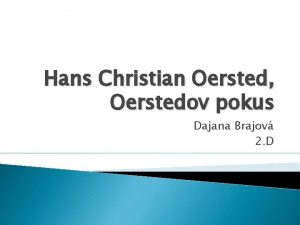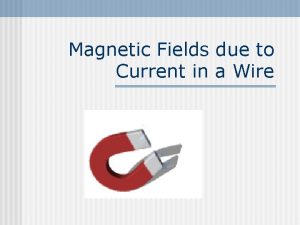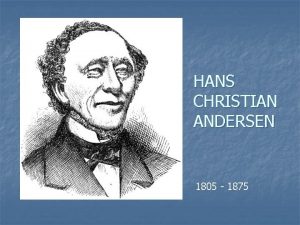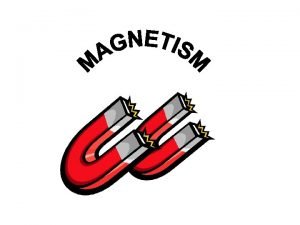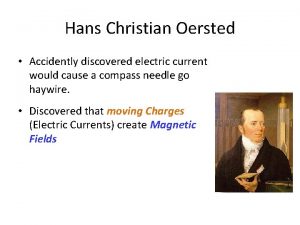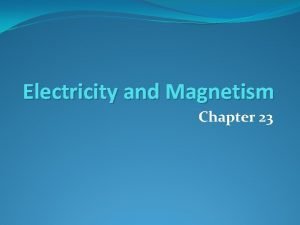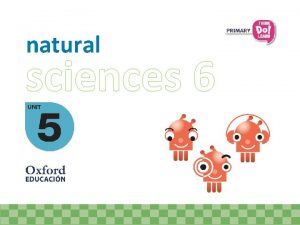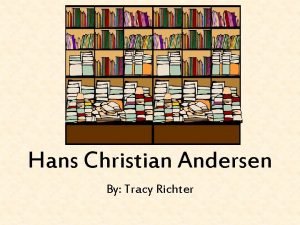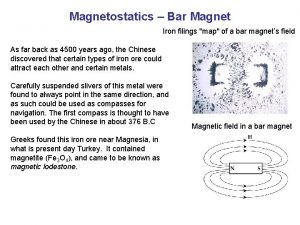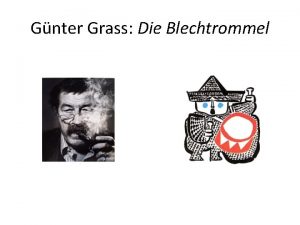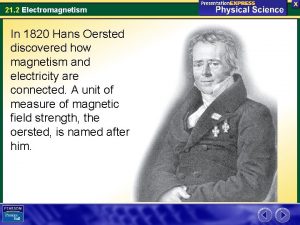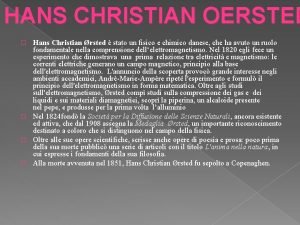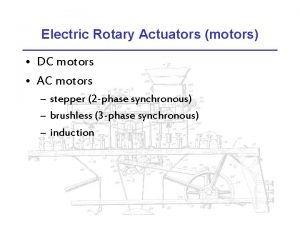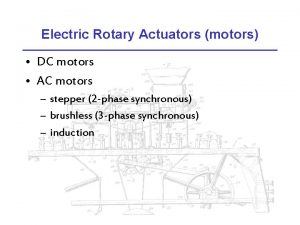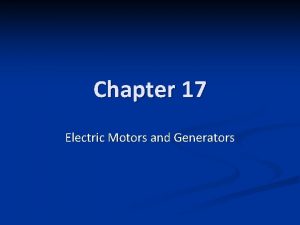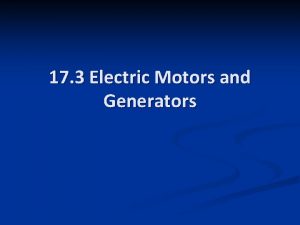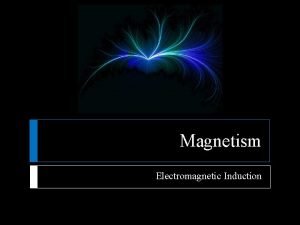Electric Motors are Every Where Hans Christian Oersted












- Slides: 12

Electric Motors are Every. Where!

Hans Christian Oersted & Michael Faraday n n Oerstad discovered an electric current could make a magnetic field. Faraday discovered that a magnetic field could make an electric current

Factors Affecting an Induced Current n n Moving a magnet through a coiled wire Moving the magnet faster Adding more wire loops Change the magnet’s direction will reverse the current

Michael Faraday n n n n Started out life as an apprentice to a blacksmith Was a professor Lecturer British government consultant Improved the quality of steel Liquified chlorine Made an electric current by changing a magnetic field

Electric Generators n Use electromagnetic induction to change mechanical energy into electrical energy.

Question Time n n n Who discovered that a magnetic field could make an electric current a. Edison b. Tesla c. Oerstad d. Faraday Induced current is affected by all of the following except a. increasing the number of wire loops b. moving the magnet faster c. moving the magnet through the wire d. heating the wire These change mechanical energy to electrical energy a. turbines b. motors c. generators

Alternating Current n n n Found in generators In a generator the coil makes a half turn one way and then the other In a power plant the coil are so big that the magnets do the turning

Generating Electricity n n n Electricity comes from different sources. In nuclear plants it’s thermal energy Windmills turn turbines Fossil fuels like coal or gas also release thermal energy Turbines at the Grand Coulee Dam 3 rd power plant are 9. 8 meters in diameter.

Transformers n n n A device the relies on induction. It increases or decreases the voltage of alternating current. The number of loops in the primary or secondary coils determines whether the voltage will be increased or decreased. Step-ups increase voltage and decrease current. Step-downs decrease volts, increase currents The electrical energy coming into your home has been transformed at least three times.

Bad Science Humor n n Why do transformers hum? They don’t know the words!

Question Time In alternating current, both the coil and the magnetic can turn. A. yes b. no n Transformers are devices that depends on a. conduction b. induction c. convection d. radiation n Transformers can be step up, step out and step down models a. yes b. no n

Time to Summarize n n n Electromagnetic induction is the process of making an electric current by changing a magnetic field. An electric generator converts mechanical energy through electromagnetic induction. A step-up transformer increases the voltage of an alternating current. A step-down transformer decreases the voltage. The side of a transformer that has the greater number of loops has the higher voltage.
 Oersted pokus
Oersted pokus Hans christian oersted
Hans christian oersted Hans christian oersted
Hans christian oersted Hans christian oersted experiment
Hans christian oersted experiment Hans christian oersted solinoild
Hans christian oersted solinoild Qvb right hand rule
Qvb right hand rule Aportaciones de hans christian oersted
Aportaciones de hans christian oersted Hans christian oersted
Hans christian oersted Oerstad
Oerstad Hans christian oersted experiment
Hans christian oersted experiment Hans christian oersted lebenslauf
Hans christian oersted lebenslauf Insidan region jh
Insidan region jh Hans holmgren fysiker
Hans holmgren fysiker
